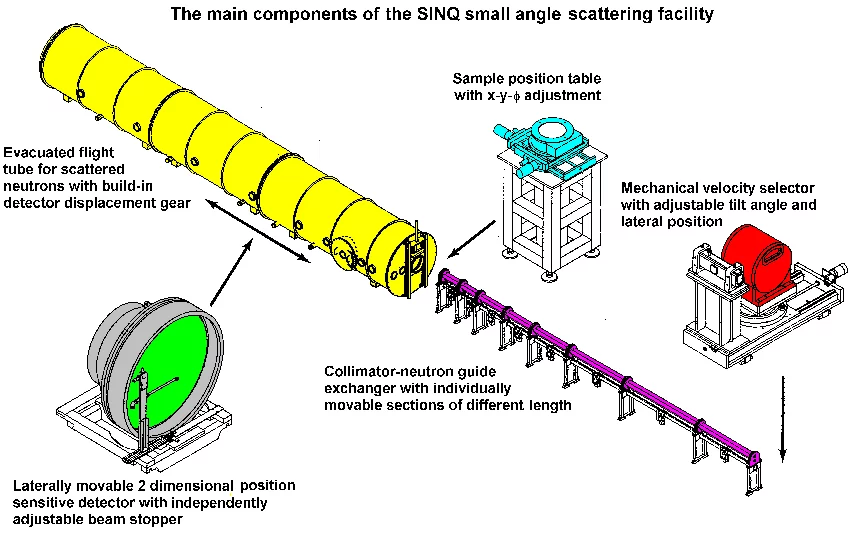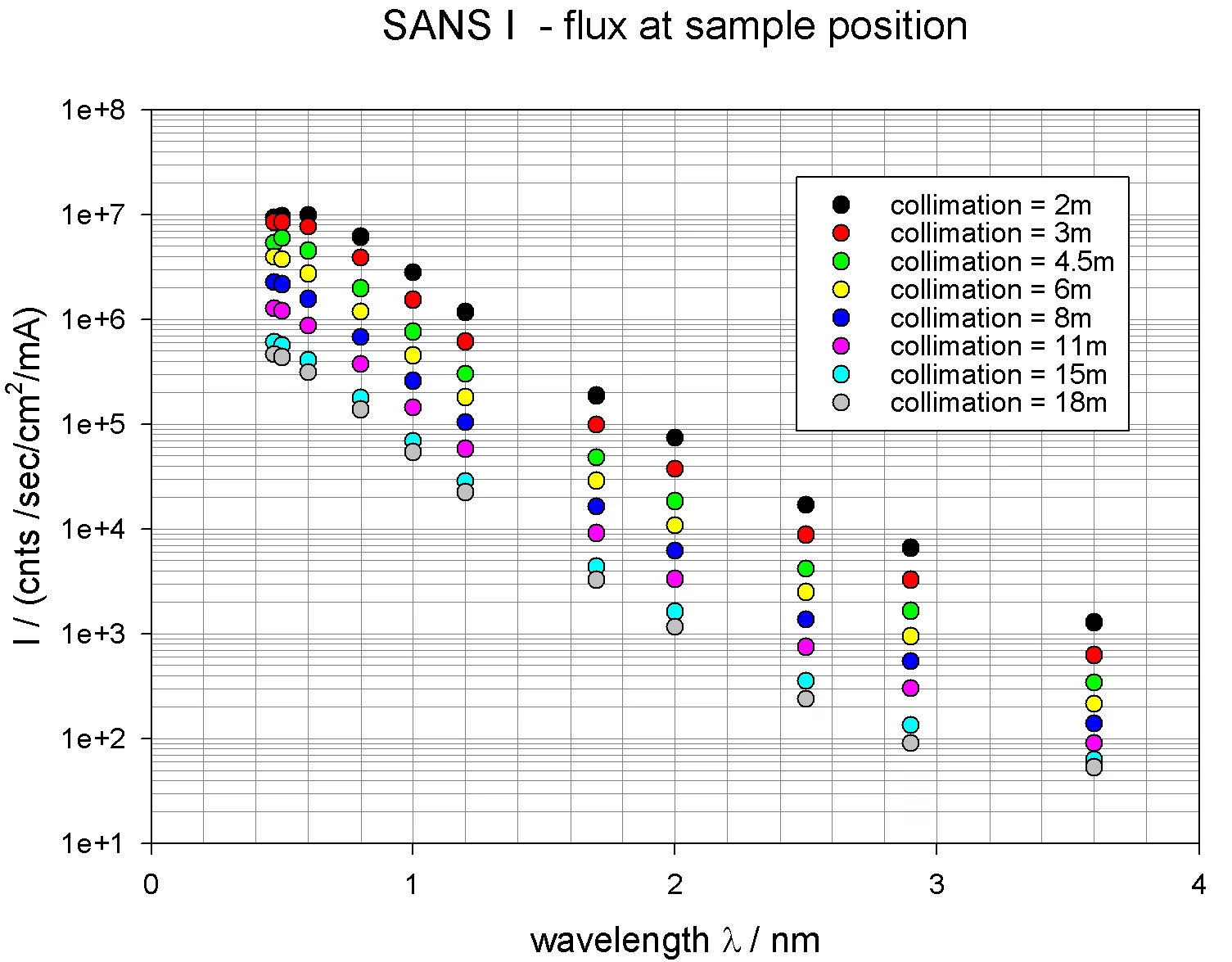The small angle neutron instrument SANS covers the Q-range from 6 x 10-3 nm-1 to 5.4 nm-1 and for the detector displaced laterally by 50 cm up to 10.5 nm-1.This allows the investigation of structures ranging from about 1 to 400 nm. The instrument is installed at the curved neutron guide "1RNR16".
The incoming neutrons are monochromized by a mechanical velocity selector and collimated on a variable length from 1 to 18 m. The two-dimensional ³He-detector with 128 x 128 elements of 7.5 x 7.5 mm² can be positioned at any distance between 1.4 and 20 m from the sample. Additionally it can be displaced laterally by 50 cm inside the large vacuum vessel to increase the accessible Q-range at any detector position. This option is combined with a rotation around its vertical axes to reduce parallaxes effects. The memory card can store 1024 frames of 16k detector elements to allow time resolved measurements. The sample support consist of a remotely controlled xyz and rotation table for mounting devices for working in air (e.g. sample changer, high pressure cell, ...) and a vacuum chamber (able to carry an electromagnet)
SINQ - call for proposals I-26
proposal submission deadline: 15 January 2026
The Digital User Office will be open for proposal submission approximately 4-5 weeks before the deadline. Of course editing and saving of proposals is possible any time.
SINQ Quicklinks
User Contact Points at PSI


